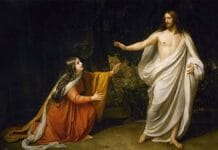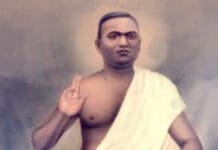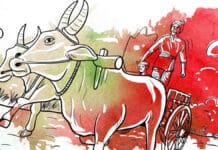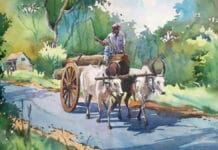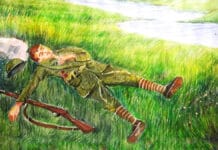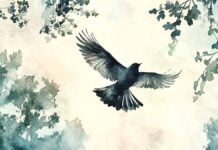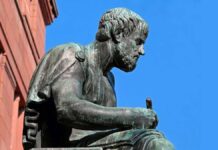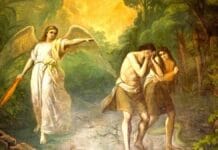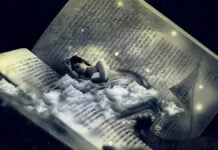A ballad is a popular narrative song passed down orally. Folk (or traditional) ballads are anonymous and recount tragic, comic, or heroic stories emphasising a central dramatic event; examples include Barbara Allen and John Henry. Beginning in the Renaissance, poets have adapted the conventions of folk ballads for their original compositions. Examples of this “literary” ballad form include John Keats’s La Belle Dame sans Merci, Thomas Hardy’s During Wind and Rain, and Edgar Allan Poe’s Annabel Lee.
In the beginning, ballads were a significant part of the oral tradition. Therefore, they were not frequently written down. It was not until around the 13th century in Italy and Spain that ballads became an essential form of the written literary tradition. These ballads were expressions of romantic love, often telling the story of the poet meeting and falling in love with his beloved. This is why modern love songs are often called “ballads”.
Ballads are perhaps the most ancient of all literary forms – the earliest works of literature we know of are mythological epic poems that tell the stories of the culture that produced them. Throughout the 15th century, ballads began to take the form of advice pieces. Their purpose was often to impart wisdom to the reader. Their influence also spread, and writers in England, Spain, France, Italy, and Germany were soon composing them.
The word ballad is of French provenance. It is a type of poetry or verse used in dance songs in ancient France. Later, during the late 16th and 17th centuries, it spread over most European nations. Owing to its popularity and emotional appeal, it remained a powerful tool for poets and lyricists to prepare music in lyrical ballads and earn a handsome income.
The art of lyrical ballads and ballad poetry lost popularity during the latter half of the 19th century. However, it is still read and listened to with interest in most European countries, including the British Isles.
Evolution of Ballads
Two schools of thought, namely the communal school of thought and the individualist school of thought, have dominated the world of ballads throughout its development. Communalists believe that the evolution of the ballad resulted from the joined and shared literary endeavours of many people. Individualists negate this approach to the extent that they consider the later development a modification of the archetype. Most of the ballad examples in ancient times used to be passed from generation to generation through oral traditions. This is because there was no language in which to write them down.
However, in the modern world, preserving and transmitting such literary treasures have become more accessible. The availability of advanced technology and common languages has improved the documentation and accessibility of these resources for people in every part of the world.
Distinguishing Features of Ballads
A typical ballad consists of stanzas that contain a quatrain or four poetic lines. In the English tradition, it usually follows a form of rhymed (abcb) quatrains alternating four-stress and three-stress lines. The meter or rhythm of each line is generally iambic, which means it has one unstressed syllable followed by a stressed syllable. In ballads, there are usually eight or six syllables in a line. Like any poem, some ballads follow this form, and some don’t, but almost all ballads are narrative, which means they tell a story.
The ballad form is enormously diverse, and poems in this form may have any one of hundreds of different rhyme schemes and meters. Nearly every culture on earth produces ballads, often in epic poems relating to the culture’s mythology. Ballads have a long history and are found in many cultures. However, “ballad” typically refers to the relatively short lyrical poems produced by European poets around the 13th century.
A ballad is a type of poem that is sometimes set to music. Because the ballad was initially set to music, some ballads have a refrain or a repeated chorus, just like a song does. Similarly, the rhyme scheme is often ABAB because of the musical quality of this rhyme pattern. While ballads have always been widespread, it was during the Romantic movement of poetry in the late 18th century that the ballad had a resurgence and became a popular form. Many famous romantic poets, like William Wordsworth, wrote in the ballad form.
Many love songs today can be considered ballads. The word ballad can also refer to a slow, romantic, or sentimental song in popular music. However, this has no significant relationship to the literary definition. The ballad began as a folk song and continues today in popular music.
Ballads, no matter which category they fall into, mainly rely on simple and easy-to-understand language or dialect from its origin. Stories about hardships, tragedies, love, and romance are standard ingredients of the ballad. This is irrespective of geographical origins.
Another conspicuous element of any ballad is the recurrence of certain lines at regular intervals. Ballads can also be in the interrogative form, with appropriate answers to every question asked. Ballads seldom directly communicate about a particular event, character, or situation. It is left to the audience to deduce the story’s moral from the narration.
Ballads in Literature
Literary ballads are often written in poetry, with some consisting of quatrains and others comprised of couplets.
- Tell a Story – They generally tell a story very directly, and they do not have to be about love at all.
- Use Imagery – Ballads often use vivid and expressive imagery in a detached manner to relay the tale.
- Put to Music – A prominent characteristic of ballads is that they can often easily be put to music.
An early example is a selection from a ballad entitled “Ballata 5” by Guido Cavalcanti, which emphasizes the form and voice of the standard ballad of the day:
That which befalls me in my Lady’s presence
Bars explanation intellectual.
I seem to see a lady wonderful
Spring forth between her lips, one whom no sense
Can fully tell the mind of, and one whence
Another, in beauty, springeth marvelous,
From whom a star goes forth and speaketh thus:
‘Now my salvation is gone forth from thee.’
Although like a poem in some ways, the ballad tells more of a story than a poem does. The ballad can complete a full picture of what is going on. The narrative form of the ballad was not fully complete at this point of the ballad, so this example may appear to be more of a poem than seen in later ballads.
In the middle of the 15th century, Francois Villon wrote a ballad entitled Ballad of the Gibbet, where he stated:
Brothers and men that shall after us be,
Let not your hearts be hard to us:
For pitying this our misery
Ye shall find God the more piteous.
Villon was advising his enemies and making a narrative statement about the condition of being hunted by another person.
Around the same period, an anonymous Spanish poet, who was thought to be a woman, crafted the Ballad of the Cool Fountain. The intent of her message can only be understood by reading the entire poem:
Fountain, coolest fountain,
Cool fountain of love,
Where all the sweet birds come
For comforting-but one,
A widow turtledove,
Sadly sorrowing,
At once the nightingale,
That wicked bird, came by,
And spoke these honied words:
“My lady, if you will,
I shall be your slave.”
“You are my enemy:
Begone, you are not true!”
Green boughs no longer rest me,
Nor any budding grove.
Clear springs, where there are such,
Turn muddy at my touch.
I want no spouse to love
Nor any children either.
I forego that pleasure and their comfort too.
No, leave me; you are false
And wicked-vile, untrue!
I’ll never be your mistress!
I’ll never marry you!
This piece proves that the ballad began advancing toward much more narrative forms. However, further developments perfected the ballad form even more.
One of the most famous examples of a ballad is Samuel Taylor Coleridge’s The Rime of the Ancient Mariner. It was written in 1797 and is the story of a sailor who has returned from a long voyage. He truly sophisticated the form because he combined elements of the earlier ballads with newer methods. The poem is strictly structured in meter and rhyme and tells the story of an old sailor who stops people on their way to a party. The sailor describes a sea voyage he once took in which the ship was lost, and everyone on board (except for this one old man) perished.
The sailor says:
The ship was cheered, the harbour cleared,
Merrily did we drop
Below the kirk, below the hill,
Below the lighthouse top.
The Sun came up upon the left,
Out of the sea came he!
And he shone bright, and on the right
Went down into the sea.
In the first stanza, the sailor talks about how the ship set off and began its journey. The second stanza continues the journey as the sun sets and rises. Here, the sailor is telling us a story about what happened at sea, so this is a narrative. The poem is also arranged in quatrains, which are four-line stanzas. The rhyme scheme is also ABAB.
Many folk songs are ballads. For example, the Ballad of John Henry, also known as The Steel-Driving Man. There are countless versions of the song, ranging across blues, folk music, and bluegrass, but the basic story is always the same: John Henry’s job on the railroad is threatened by the industrial power of a steam drill. John challenges the machine to a drilling race and wins through his immense strength and stamina – but in the end, the effort kills him.
Today, a ballad is still a great way to combine two separate forms of literature – like a novel or play, the ballad tells a story with characters and a plotline, but simultaneously, it has the meter and rhyme of a poem. This combination of art forms lends ample opportunity for creativity and individual expression.

